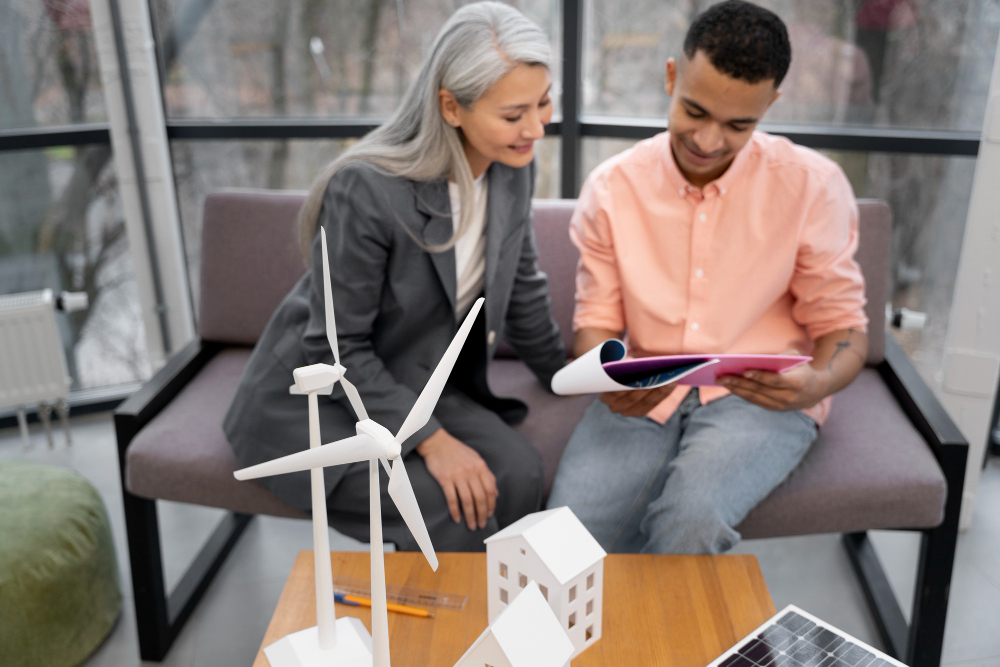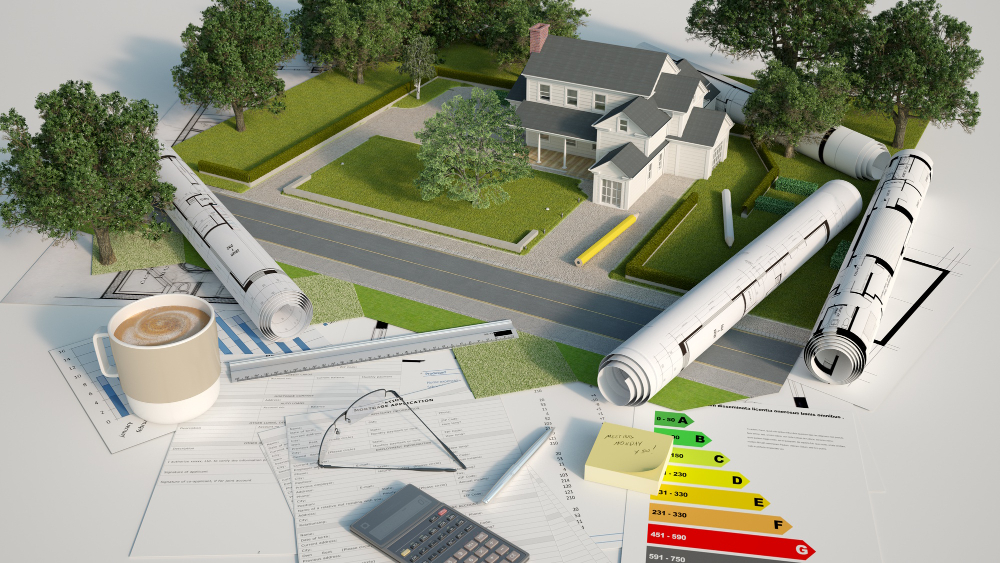Last updated on
In the pursuit of a more sustainable and environmentally conscious society, the concept of eco-friendly homes has gained significant traction within the construction industry.
These homes, designed with sustainability at their core, aim to minimize environmental impact through energy efficiency, reduced waste, and the use of renewable resources.
As the importance of sustainability continues to grow, engineers emerge as pivotal figures in driving innovations and crafting solutions that pave the way for greener living spaces.
Their expertise and ingenuity are crucial in transforming the vision of eco-friendly homes into a tangible reality, addressing the urgent need for buildings that harmonize with our planet’s ecological balance.
The Rise of Sustainable Engineering

Sustainable engineering is a discipline that integrates environmental considerations into the design and operation of systems and technologies, aiming to use resources efficiently while minimizing negative impacts on the environment.
Its relevance has never been more pronounced, as today’s global challenges—ranging from climate change to dwindling natural resources—demand innovative approaches to construction and infrastructure development.
The shift toward building eco-friendly homes is motivated by a collective desire to combat environmental degradation, reduce carbon footprints, and promote a sustainable lifestyle that can be passed down to future generations.
Sustainable engineering stands at the forefront of this movement, offering a blueprint for creating homes that are not only energy-efficient and low-impact but also healthy and comfortable for their inhabitants.
Engineering Types and What They Do
In the construction of eco-friendly homes, a variety of professional engineer types contribute their expertise to ensure that sustainability goals are met.
Civil Engineers design and oversee the construction of the home’s foundation and structure, ensuring stability and resilience while incorporating sustainable practices.
Structural Engineers focus on creating efficient frameworks that use materials in a way that minimizes environmental impact without compromising safety.
Environmental Engineers play a critical role in assessing the ecological aspects of construction projects, advising on how to reduce pollution, manage waste, and integrate natural elements into home designs.
Mechanical Engineers are involved in designing systems for heating, ventilation, and air conditioning (HVAC) that are energy efficient and conducive to a home’s overall sustainability.
Electrical Engineers, meanwhile, develop electrical systems that maximize the use of renewable energy sources, such as solar panels, to power homes effectively.
Each of these engineering types and what they do contributes significantly to the overarching goal of sustainable construction, working collaboratively to ensure that eco-friendly homes are not only feasible but also practical and desirable in today’s market.
These professionals form the backbone of the movement towards greener living spaces, leveraging their specialized knowledge to address the complex challenges of sustainable construction.
Through their concerted efforts, the dream of living in a home that embodies the principles of environmental stewardship and sustainability becomes a reality for more and more people around the world.
Key Strategies for Building Eco-friendly Homes

Engineers are at the forefront of integrating innovative strategies and technologies to construct homes that are not only eco-friendly but also viable for the future.
These strategies focus on reducing the environmental footprint of homes while enhancing their efficiency and sustainability. Key areas of focus include:
- Energy Efficiency: Engineers are designing homes to be more energy-efficient through better insulation, high-efficiency windows, and smart home technologies that minimize energy use. These measures reduce the reliance on heating and cooling systems, leading to significant energy savings.
- Renewable Energy Integration: The incorporation of renewable energy sources, such as solar panels and wind turbines, into home designs is becoming increasingly common. Engineers are developing ways to seamlessly integrate these technologies, allowing homes to produce their own clean energy.
- Water Conservation: Water-saving technologies, including rainwater harvesting systems and low-flow plumbing fixtures, are being implemented to reduce water usage. Engineers are also designing landscaping that requires minimal irrigation, further conserving water resources.
- Sustainable Material Use: The selection of materials plays a critical role in building eco-friendly homes. Engineers are opting for sustainable materials such as bamboo, recycled steel, and reclaimed wood, which offer durability and a reduced environmental impact compared to traditional building materials.
Challenges and Opportunities
Despite the progress, engineers face several challenges in sustainable construction, including the higher upfront costs of green technologies, difficulties in integrating new systems into existing infrastructure, and navigating complex regulatory environments. However, these challenges also present opportunities for innovation and growth within the field.
The need to make eco-friendly homes more affordable and accessible is driving research into cost-effective materials and technologies.
The integration challenge is fostering interdisciplinary collaboration, as engineers, architects, and builders work together to create holistic solutions.
Meanwhile, evolving regulations are pushing the industry toward higher sustainability standards, encouraging continuous improvement in eco-friendly construction practices.
The opportunities for innovation in creating eco-friendly homes are boundless, with each challenge offering a chance to refine and improve the ways we build and live.
Choosing the Right Engineering Partners
Selecting the right engineering and construction partners is a pivotal step towards realizing the dream of living in an eco-friendly home.
When embarking on this journey, it’s crucial to choose partners who not only possess the technical expertise but are also deeply committed to sustainability principles. Here are some guidelines to help in this selection:
- Track Record: Look for engineers and builders with a proven track record of designing and constructing eco-friendly homes. Their previous projects can give you insight into their commitment to sustainability and the quality of their work.
- Sustainability Commitment: Choose partners who prioritize sustainability not just in their construction practices but in their overall business operations. This commitment can often be gauged through certifications, memberships in green building organizations, or awards.
- Collaborative Approach: The creation of a truly sustainable home requires close collaboration between engineers, architects, and builders. Opt for partners who are open to communication and teamwork, ensuring that all aspects of the home—from its structure to its energy systems—are designed with sustainability in mind.
The Takeaway
Engineers play a crucial role in steering the construction industry towards a more sustainable future.
Through their expertise in sustainable design and innovative construction techniques, they are leading the charge in building eco-friendly homes that reduce environmental impact while providing safe, healthy living spaces for individuals and families.
The advancements in technology and sustainable practices they bring to the table are not only improving the efficiency and sustainability of homes today but are also setting new standards for the buildings of tomorrow.
Table of Contents




